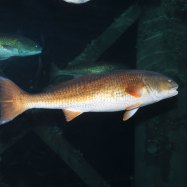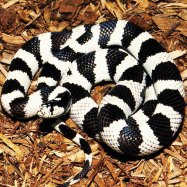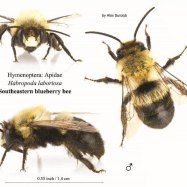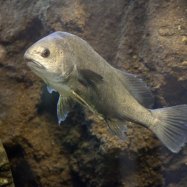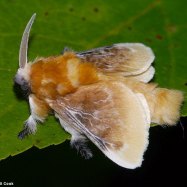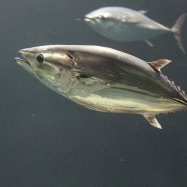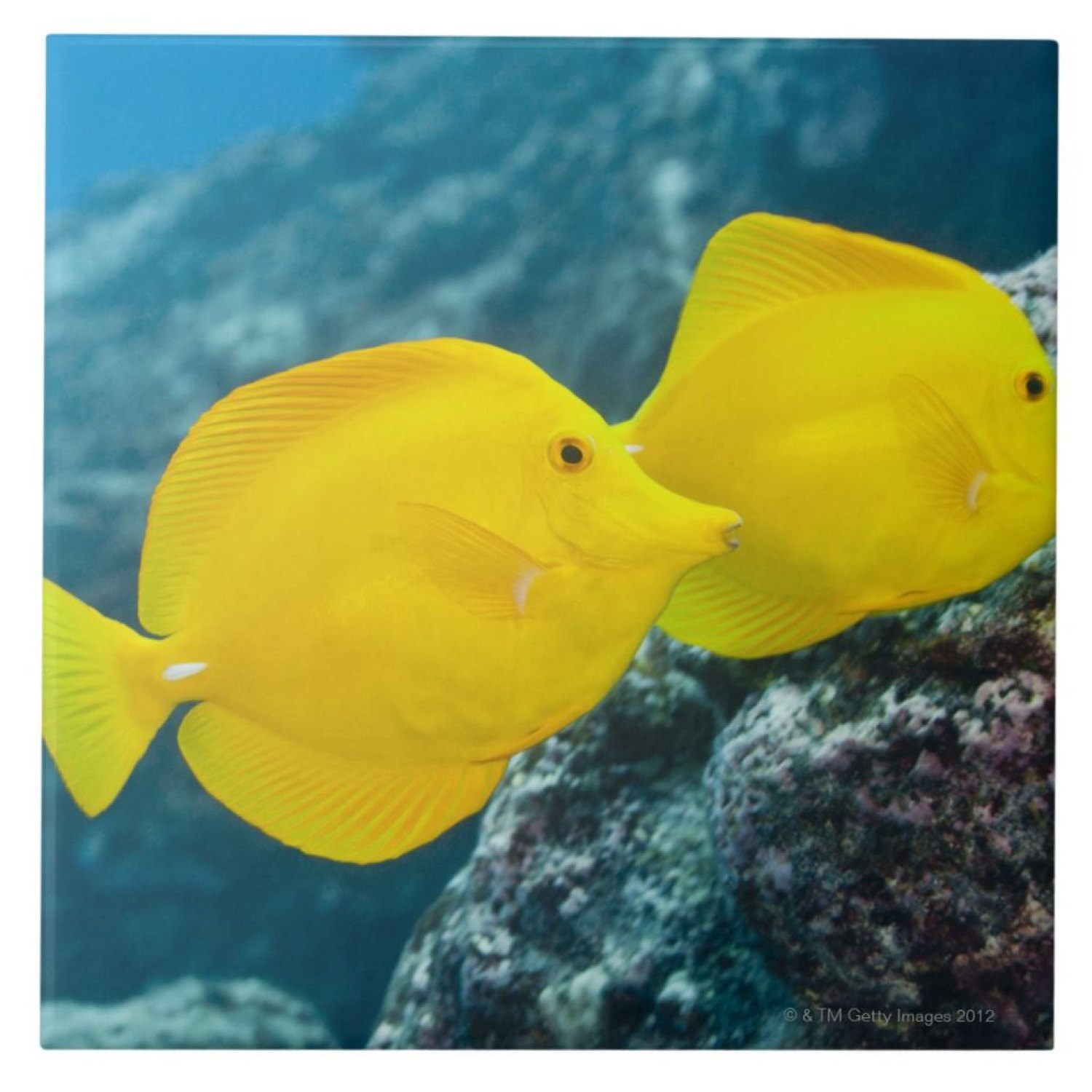
Yellow Tang
Approximately 4 to 6 inches (10 to 15 centimeters)
The Yellow Tang, a popular addition to tropical aquariums, is known for its vibrant color and interesting body shape. Growing up to 6 inches, this member of the Acanthuridae family is a hardy fish that thrives in tropical and subtropical waters. With its oval and flat body, the Yellow Tang is a graceful swimmer that adds a splash of color to any tank.
Animal Details Summary:
Common Name: Yellow Tang
Kingdom: Animalia
Habitat: Coral reefs
Meet the Stunning Yellow Tang: A Vibrant Beauty of the Ocean
The ocean is home to some of the most fascinating creatures on Earth. From the majestic whales to tiny seahorses, the marine world never ceases to amaze us. However, among these magnificent beings, there is one animal that stands out with its vibrant color and graceful movements – the Yellow Tang.Scientifically known as Zebrasoma flavescens, the Yellow Tang is a tropical fish that belongs to the family Acanthuridae Yellow Tang. It is commonly found in the Pacific Ocean, particularly in the waters of Hawaii. This striking fish has captured the hearts of many, not just because of its beauty, but also because of its importance in the ocean's ecosystem.
The Classification of the Yellow Tang
Before diving into the world of the Yellow Tang, let's first understand its place in the animal kingdom. As mentioned above, its scientific name is Zebrasoma flavescens, which can be broken down into different categories. "Zebra" means striped or marked like a zebra, while "soma" means body. So, in simple terms, the Yellow Tang's body has stripes like a zebra.The species name "flavescens" is derived from the Latin word "flavus," which means yellow. This perfectly describes the Yellow Tang's vibrant color, making it a fitting and easy-to-remember name for this fish.
The Yellow Tang is classified under the Animalia kingdom, which includes all animals Yellow Bellied Sea Snake. It belongs to the phylum Chordata, which consists of animals with a notochord (a flexible rod that runs along the back of the body) at some stage in their life cycle. The class of the Yellow Tang is Actinopterygii, which includes bony fish, and the order is Perciformes, which includes perch-like fish. Lastly, it is in the family Acanthuridae, which includes surgeonfish or tangs.
Habitat and Geographical Distribution
The Yellow Tang is found in tropical and subtropical waters, particularly in the Pacific Ocean. Its natural habitat is in coral reefs, where it typically stays near the bottom of the ocean. Coral reefs are underwater structures made from the skeletons of tiny marine animals called polyps. They provide shelter, food, and breeding grounds for a diverse range of marine life.Coral reefs are not only important for the Yellow Tang's survival, but also for the survival of many other species, including humans. They act as natural barriers, protecting coastlines from storms and erosion. They also support the fishing and tourism industries, making them crucial for the economy and livelihood of many communities.
Feeding Method
Yellow Tangs are herbivorous, which means they primarily eat plant-based food. In the ocean, they mainly feed on algae, including red, brown, and green varieties. They use their small, angled teeth to scrape algal films off rocks and corals.As they feed, they also play an essential role in maintaining a balanced ecosystem in coral reefs. The algae they consume can overgrow and smother corals, but, thanks to the Yellow Tang's constant grazing, their population is kept in check. Without the Yellow Tang, coral reefs would face serious problems with overgrown algae, which can lead to their destruction.
In captivity, Yellow Tangs can be fed with dried seaweed sheets and prepared herbivore diets. However, it is crucial to ensure that the diet is balanced and meets their nutritional needs to maintain their health and vibrant color.
Physical Appearance
The Yellow Tang is easily recognizable by its striking yellow color. Its oval-shaped, flat body is also marked by bold black lines running vertically along its body, giving the impression of a zebra's stripes. These stripes are more prominent in adults than in juveniles. As they age, their color gradually fades, and the stripes become less defined.The average size of a Yellow Tang is approximately 4 to 6 inches (10 to 15 centimeters) in length, with the largest recorded individual measuring 8 inches (20 centimeters). They have a streamlined body that allows them to swim swiftly and gracefully through the water.
One of the most fascinating features of the Yellow Tang is its ability to change color. When they are feeling stressed or threatened, they can quickly change their yellow color to dark brown or even almost black. This change in coloration helps them blend in with their surroundings, making it easier for them to hide and avoid danger.
A Dweller of the Ocean
The Yellow Tang is considered to be a peaceful fish, spending most of its time swimming in groups near the bottom of the ocean. They are very social creatures and are found in groups or schools of up to hundreds of individuals. In these schools, they often form a hierarchy, with larger and more dominant individuals taking the lead.In the wild, the Yellow Tang can live up to 20 years. However, in captivity, they have a shorter lifespan of around 8 to 10 years. This is due to the challenges of replicating their natural habitat, as well as the stress that they may encounter during the capture and transportation process.
Caring for Yellow Tangs in Captivity
Many aquarium owners are captivated by the beauty of the Yellow Tang and often wish to keep them as pets. However, it is essential to understand that they require specific care and conditions to thrive in captivity. Without proper care, they can suffer from a variety of health issues, including nutritional deficiencies, infections, and stress.First and foremost, a suitable aquarium for Yellow Tangs should replicate their natural habitat. This means providing plenty of space, live rock, and sand for them to graze and seek shelter. A well-established tank with mature and stable water conditions is also crucial, as these fish are sensitive to water parameters.
To ensure they receive a balanced diet, aquarium owners should feed their Yellow Tangs with a variety of seaweed and herbivore-based diets. It is also recommended to provide them with vitamin and mineral supplements to ensure their nutritional needs are met.
Lastly, regular water changes and monitoring of water parameters are essential to maintain a healthy environment for these fish. They produce a considerable amount of waste, and poor water quality can lead to health issues and even death.
The Threat to the Yellow Tang
Despite its importance in coral reefs and its popularity in the aquarium trade, the Yellow Tang is facing threats to its survival. One of the biggest threats is over-harvesting, where large numbers of Yellow Tangs are caught in the wild and sold to aquarium owners. This not only puts a strain on their natural population but also exposes them to stress and health problems during transportation and acclimation to captivity.The destruction of their natural habitat is also a significant concern. The degradation of coral reefs due to pollution, climate change, and overfishing has a direct impact on the Yellow Tang's survival. Without a healthy coral reef ecosystem, these fish may not have enough food and shelter, leading to a decline in their population.
Conservation Efforts
To protect the Yellow Tang and its habitat, various conservation efforts are in place. In Hawaii, where the species is native, there is a law that prohibits the collection of Yellow Tangs for commercial purposes. This has helped to control the harvest and reduce the number of Yellow Tangs in the aquarium trade.Additionally, organizations such as the National Oceanic and Atmospheric Administration (NOAA) conduct research and implement conservation efforts to monitor and protect coral reef ecosystems. They also educate the public on the importance of conserving marine life, including the Yellow Tang.
The Importance of Responsible Pet Ownership
Owning a Yellow Tang or any pet should not be taken lightly. It comes with a responsibility to provide proper care and ensure their well-being. The same goes for buying animals, particularly those that are threatened in the wild. Before purchasing a Yellow Tang, it is crucial to do extensive research, understand their needs, and only purchase from reputable sources that practice ethical and sustainable methods.In conclusion, the Yellow Tang may seem like a simple and beautiful fish, but it is a vital species in the ocean's ecosystem. Its vibrant color and graceful movements have captured our hearts, making it a highly sought-after pet. However, it is crucial to remember that these fish play a crucial role in maintaining a healthy ocean environment. They deserve our respect, protection, and utmost care to ensure their survival for generations to come. So, the next time you see a Yellow Tang swimming gracefully in a coral reef, take a moment to appreciate its beauty and understand its importance in the marine world.

Yellow Tang
Animal Details Yellow Tang - Scientific Name: Zebrasoma flavescens
- Category: Animals Y
- Scientific Name: Zebrasoma flavescens
- Common Name: Yellow Tang
- Kingdom: Animalia
- Phylum: Chordata
- Class: Actinopterygii
- Order: Perciformes
- Family: Acanthuridae
- Habitat: Coral reefs
- Feeding Method: Herbivorous
- Geographical Distribution: Pacific Ocean
- Country of Origin: Hawaii
- Location: Tropical and subtropical waters
- Animal Coloration: Yellow
- Body Shape: Oval and flat
- Length: Approximately 4 to 6 inches (10 to 15 centimeters)
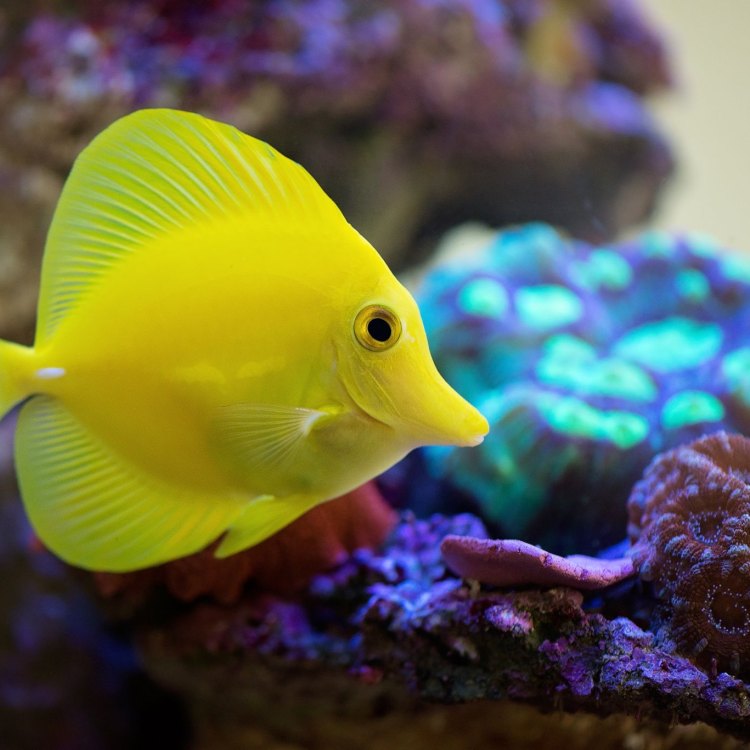
Yellow Tang
- Adult Size: Up to 8 inches (20 centimeters)
- Average Lifespan: 20 years
- Reproduction: Sexual
- Reproductive Behavior: Eggs released into the water column
- Sound or Call: No specific sound or call
- Migration Pattern: Non-migratory
- Social Groups: Generally solitary but may form small groups
- Behavior: Active and territorial
- Threats: Overfishing and habitat destruction
- Conservation Status: Least Concern
- Impact on Ecosystem: Important in controlling algae growth on coral reefs
- Human Use: Popular aquarium fish
- Distinctive Features: Bright yellow color and small size
- Interesting Facts: They undergo a color change during their lifespan, starting as dull brown and becoming bright yellow as adults.
- Predator: Some larger fish and invertebrates
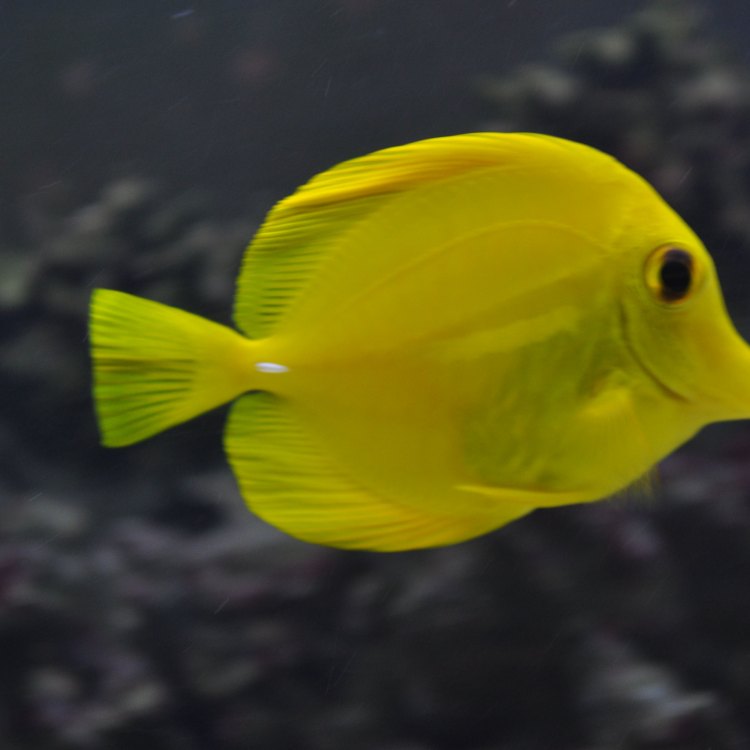
Zebrasoma flavescens
The Vibrant and Versatile Yellow Tang: A Colorful Addition to the Ocean's Ecosystem
When one pictures a tropical reef, the first thing that comes to mind is the colorful array of fish swimming in the crystal-clear waters. Among these vibrant creatures is the beautiful and iconic Yellow Tang (Zebrasoma flavescens). With its brilliant yellow color and small size, the Yellow Tang is not only a sight to behold but also an important member of the ocean's ecosystem.Adult Yellow Tangs can grow up to 8 inches (20 centimeters) in length and have an average lifespan of 20 years PeaceOfAnimals.Com. These fish are found in the clean and warm waters of the Pacific Ocean, specifically in the Hawaiian Islands, Japan, and Easter Island. They are also found in the aquarium trade and are a popular choice for fish enthusiasts due to their eye-catching appearance and active behavior.
Reproductive Behavior and Unique Features
As with most fish, the Yellow Tang's reproductive behavior is sexual, meaning they require both a male and female for reproduction. The females release eggs into the water column, and the males then fertilize them. These eggs are small and transparent and are usually released in large numbers.One of the most distinctive characteristics of the Yellow Tang is its vibrant yellow color. However, it is interesting to note that they undergo a color change during their lifespan. They start off as dull brown as juveniles and gradually transition to their signature bright yellow color as adults. This transformation is thought to help them blend in better with their surroundings as they grow and mature Yak.
Behavior and Social Groups
Yellow Tangs are generally solitary fish, although they may form small groups during mating and in feeding areas. They are territorial and will vigorously defend their space from intruders. This territorial behavior is essential for their survival as it helps them to secure food resources and mates.These fish are also known for their active behavior, constantly swimming and searching for food. They are herbivorous and feed on algae, making them an essential part of controlling algae growth on coral reefs. Yellow Tangs are also known to play an important role in the coral reef ecosystem by helping to keep it balanced and healthy.
Threats and Conservation Status
Despite their important role in the ecosystem, Yellow Tangs face significant threats to their population due to overfishing and habitat destruction. They are heavily targeted by fishermen for the aquarium trade, and their natural habitats are being destroyed by pollution and human activities such as coastal development and coastal fishing.As a result, the International Union for Conservation of Nature (IUCN) has classified the Yellow Tang as "Least Concern" on their Red List of Threatened Species. This means that they are currently not facing significant risks to their survival. However, the continuous decline of their population due to various threats is a cause for concern, and conservation efforts must be put in place to protect this vital species.
Human Use and Impact on the Ecosystem
Aside from being an important member of the ocean's ecosystem, Yellow Tangs also have significant value for humans. They are a popular choice for aquarium fish due to their bright color and active behavior. However, this demand has led to the overexploitation of their populations in some areas, threatening their survival in the wild.Moreover, the decline of Yellow Tang populations can have a detrimental effect on the ocean's ecosystem. As herbivores, they play a crucial role in maintaining the balance of algae growth on coral reefs. Without them, algae can quickly overgrow, suffocating and damaging corals and other marine life. Therefore, it is vital to regulate the collection and trade of Yellow Tangs to maintain a healthy and sustainable population in the wild.
Predators and Defense Mechanisms
Like all marine creatures, Yellow Tangs also have predators that pose a threat to their survival. Some of their common predators include larger fish and invertebrates such as eels, groupers, and crabs. To protect themselves, Yellow Tangs have several defense mechanisms, including their vibrant color, which serves as a warning to potential predators. They also have sharp spines on their sides, making it difficult for predators to swallow them.Moreover, their territorial behavior also serves as a defense mechanism as it helps them to protect themselves and their young from intruders. They can also quickly change direction and swim in a zig-zag motion, making it challenging for predators to catch them.
In Conclusion
The Yellow Tang may be small, but its importance in the ocean's ecosystem cannot be overstated. From their vibrant color and active behavior to their essential role in maintaining the balance of coral reefs, these fish contribute significantly to the marine environment. However, with constant threats from overfishing and habitat destruction, it is crucial to protect and conserve these beautiful creatures for current and future generations to enjoy. Whether in the wild or in the aquarium, the Yellow Tang is a true gem of the sea and a testament to the importance of preserving our oceans' biodiversity.
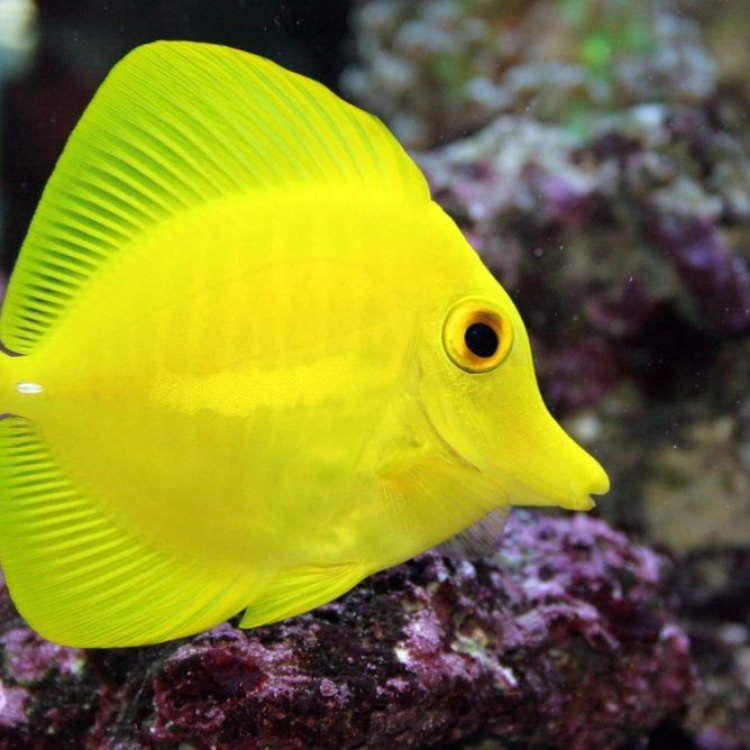
Meet the Stunning Yellow Tang: A Vibrant Beauty of the Ocean
Disclaimer: The content provided is for informational purposes only. We cannot guarantee the accuracy of the information on this page 100%. All information provided here may change without prior notice.

